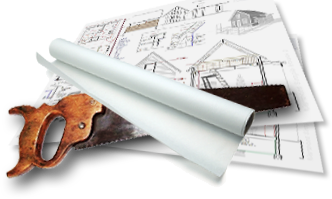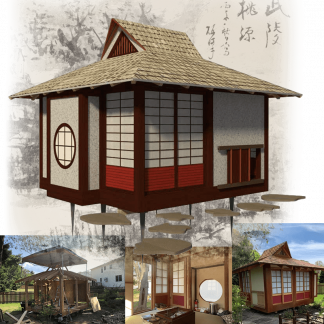A floor is more than a surface; it’s the foundation of a home’s character and the stage for daily life. When selecting new flooring, the focus often falls on tangible qualities like color, texture, and durability ratings. We imagine how a rich hardwood or a sleek modern tile will transform a space. Yet, the true measure of a floor’s longevity is determined by factors that are completely invisible once the project is complete. The difference between a floor that remains flawless for decades and one that begins to show signs of failure within a few years rarely lies in the price per square foot of the material. Instead, it resides in the meticulous, often overlooked details of the installation. It’s the unseen craftsmanship—the careful preparation and precise execution of a dedicated flooring installer Chicago – that dictates whether this significant investment endures as a point of pride or becomes a source of constant frustration and costly repairs.
The Unseen Foundation: Subfloor Preparation
Before the first plank is laid or the first tile is set, the most critical work begins. The subfloor—the underlying structure of the room—is the true foundation, and its condition is non-negotiable. A professional installer will address several key criteria to ensure a lasting finish:
- Flatness: The surface must be perfectly level. High spots create pressure points that damage locking mechanisms, while low spots create a bouncy feeling and instability.
- Moisture Control: Moisture tests are conducted on both concrete and wood subfloors, as excess vapor can cause hardwood to warp, adhesives to fail, and mold to grow.
- Cleanliness: The surface must be immaculately clean, because even small bits of debris can create imperfections that telegraph through to the final surface.
Ignoring these foundational steps is a direct path to problems like separating planks, cracked grout, and hollow-sounding tiles. Proper preparation is what separates a beautiful, long-lasting floor from one that fails prematurely.
Acclimation and Layout: The Science of a Stable Floor
Flooring materials are not inert; they respond to their environment. The process of acclimation, which involves letting the new flooring sit in the installation area for a specific period, is a crucial scientific step. It allows the material to adjust to the home’s ambient temperature and humidity levels before it is secured in place. When this is skipped, the consequences manifest with the changing seasons. Hardwood installed in a dry winter may expand and buckle dramatically during a humid summer. Conversely, vinyl plank installed in summer humidity can shrink in the winter, creating unsightly gaps between the boards. Beyond this, a professional flooring installer in chicago dedicates time to planning the layout. This strategic step ensures the finished floor is balanced and visually pleasing, avoiding awkward, narrow strips of flooring against a far wall. This foresight is a clear dividing line between amateur results and lasting, professional craftsmanship.
Precision in Practice: Hard Surface Installation Nuances
The mastery of hard surface installation is found in the small, deliberate details. One of the most vital is the expansion gap—a small space left around the perimeter of a floating floor, concealed by baseboards. This gap provides essential “breathing room,” allowing the floor to expand and contract with environmental changes without buckling or putting pressure on the walls. Another detail is the staggering of planks. Proper randomization of the end joints not only creates a more natural and appealing look but also enhances the floor’s structural integrity, distributing weight and stress more evenly. For nail-down hardwood, using the correct fastener schedule is critical to prevent future squeaks. These are not merely suggestions; they are often requirements from the manufacturer. A reputable Chicago flooring company ensures its teams adhere to these specifications precisely, safeguarding the product warranty and guaranteeing the floor performs as it was engineered to for years to come.
The Art of Soft Flooring: More Than Just a Roll of Carpet
Carpet installation, often perceived as a straightforward task, is a craft demanding unique technical skills. The most significant differentiator between a professional and an amateur job is the method of stretching. Professionals use a power stretcher, a tool that leverages against opposite walls to apply uniform, high tension across the entire carpet. This process ensures the carpet lies perfectly flat and prevents the ripples and wrinkles that inevitably appear in floors installed with only a knee kicker. Another area of expertise is seam creation. Creating a strong, invisible seam requires precise cutting, the correct seam tape, and an iron set to the perfect temperature to fuse the backing without melting the fibers. Furthermore, the underlayment is not an afterthought; the right padding provides crucial support, absorbs impact, and extends the life of the carpet. Experienced carpet installers in Chicago understand this synergy, guiding homeowners to the correct pad density to properly support their investment.
Conclusion
Ultimately, a floor becomes a lasting part of a home not by chance, but by design and execution. The elegance of the final surface is a direct result of the disciplined, methodical work performed beneath and before it. A perfectly prepared subfloor, a patient acclimation period, and the precise application of industry-standard techniques are the true guarantors of longevity. They are the invisible framework that supports the beauty you see and feel every day. When embarking on a flooring project, the focus should extend beyond the showroom samples. The most critical decision lies in choosing the hands that will bring the project to life. Entrusting your home to skilled professionals, whether they are hardwood specialists or the expert carpet installers Chicago residents rely on, is the most effective way to transform a simple purchase into a durable, worry-free investment that adds value for a generation.








